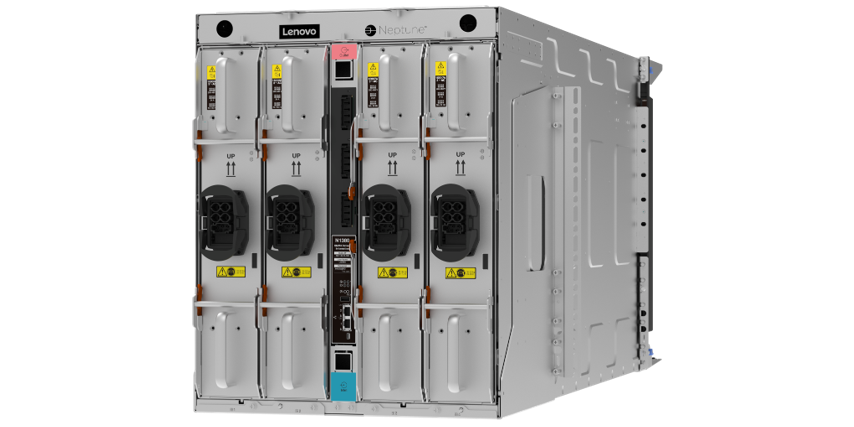In this special guest feature from Scientific Computing World, Robert Roe reports on developments in multiphysics simulation at the Global Altair Technology Conference.
As the modeling and simulation industry arrived in Paris for the Global Altair Technology Conference at the end of October, attendees were treated to three days of conference content focusing on innovation and new technologies based on simulation-driven design.
This year’s event focused on sharing applications of simulation-driven innovation from technology leaders and industry executives from all over the world, including keynotes from Ferrari, Jaguar Land Rover and Zaha Hadid Architects.
The keynotes were complemented by a host of technical sessions and presentations on the latest technology trends such as IoT and the digital twin, e-mobility, electric vehicle design – and the impact of IoT, AI and machine learning on influencing the future of design.
Simulation, optimization, cloud-based HPC, and the Internet of Things are coming together to transform how innovative products are brought to market,” commented James Scapa, Altair’s founder, chairman, and CEO. “As we move forward into an era of machine learning and artificial intelligence, opportunities will grow for the convergence of technology and emotion into great designs.”
This year’s ATC in Paris had more than 800 participants and offered more than 140 presentations. The keynotes from Harvard Business School, Columbia University, JLR, Ferrari, Volvo Cars, LG, ClassNK, and Team Tao featured topics such as simulation-driven innovation in marine, electronics, artificial intelligence, e-mobility, autonomous drones (for deep sea applications), NVH and vehicle architecture (C123). One of the highlights, Jim Scapa announced in his keynote presentation, was the acquisition of Simsolid.
Altair acquires Simsolid
Simsolid works on full-fidelity CAD assemblies to provide fast, accurate, and robust structural simulation without requiring geometry simplification, cleanup, or meshing. Its underlying technology is based largely on the work of Dr Victor Apanovitch, a former professor at Belarus Polytechnic University and the cofounder of Simsolid Corporation.
We believe Simsolid is a revolutionary technological breakthrough which will have a profound impact for product design,” said Scapa. “It’s incredibly fast, accurate, and robust and we believe a game changer for our industry.”
The Simsolid computational engine is a commercial implementation of novel and unpublished mathematics based on extensions to the theory of external approximations. The software controls solution accuracy using multi-pass adaptive analysis. Large and complex assemblies can be solved rapidly even on laptop computers.
Dr Uwe Schramm, Altair’s chief technical officer, noted that: ‘We are very serious about solution accuracy. Others have tried to accelerate the interface between CAD and simulation by degrading the mathematical robustness. It is our feeling that by rapidly moving forward with the methods in Simsolid and expanding them across applications we can have a real effect on how design gets done while maintaining our high standards for computational excellence.’
Simulation-driven design
The first day of the three-day conference featured in-depth industry seminars with customer presentations from BMW, OHB, Alstom Transport, Protiq, Renishaw, Valeo, Scania, EOS, VibroTech Engineering, and alongside these presentations Altair experts provided insights into topics such as design for manufacturing, lead time reduction, fatigue simulation, design for AM, e-mobility, system simulation, digital twins and IoT.
On all three days the technology showcase of the event featured solutions of more than 20 Altair Partner Alliance members, software and hardware allies as well as two stages for product demos: one for the latest versions of the Altair HyperWorks and Altair Inspire product suites – including Simsolid – and one for Altair Partner Alliance member demos.

Dr. Uwe Schramm and James Dagg, CTOs at Altair, keynote presentation at the 2018 Global ATC in Paris, France.
Altair CTOs Dr Uwe Schramm and James Dagg delivered a keynote presentation entitled: ‘The World is Built on Engineering’, which illustrated the power of Altair’s simulation technology through several practical examples applied to some of the most common product development challenges.
Starting with simulation in the early phases of concept design, designers can take advantage of CFD simulation to explore and validate how different designs impact the aerodynamic performance of a vehicle. Conference attendees were shown how complex, detailed nonlinear airframe simulations can be modeled and performed quickly and accurately. The presenters will also explain how multiphysics problems like e-powertrain development can be solved with a model-based development approach, which considers electrical and electro-magnetic simulation of systems and sub-systems.
During the presentation Schramm noted that Altair has been developing solver solutions since around 1992 when Optistuct development was started. Then in 2007 the company acquired Radioss technology which was ‘the real kick off for solver development’.
In the last five years with the acquisition of electromagnetics technologies Feko and Flux we really can now simulate a complex world of systems with system simulation tools, manufacturing simulation and so on,” stated Schramm.
“If you look at the capabilities that we are developing for the design of electric motors and electrical machines such as self-driving cars, you can see that we provide an entire solutions portfolio throughout development through the engineering V. Going down in the development phase and going up in the verification and validation phase,” Schramm added.
We really see that we need to focus on mixed multiphysics simulations where we add more and more physics to our simulation portfolio. Then of course computational performance is key, so you really want to optimize your structures and products so we need additional performance. And then of course you need pervasive optimization, adding optimization to any of these tools can help you to make quick design decisions,” said Schramm.
Schramm noted that engineering is becoming increasingly pervasive. ‘Engineering is in almost everything we touch, a part of every human experience. It’s in the planes and trains we travel in, the cars we drive and the appliances we use every day.’
However, engineering advanced products requires a meticulous, multiphysics development process, in which products are simulated, optimised, and verified many times to ensure the highest quality. Enabled by a broad simulation portfolio, and the effective utilization of high-performance computing, Altair’s platform aims to address all simulation needs throughout the product lifecycle.
We have assembled an entire multiphysics systems simulation portfolio starting with structural, crash and safety impact simulation, thermal analysis, fluid flow, manufacturing and electromagnetic simulation,” said Schramm. “We are not creating the mother of all solvers in this technology, we are connecting the multiphysics into the design problem and link this through optimization technology.”
This story appears here as part of a cross-publishing agreement with Scientific Computing World.





